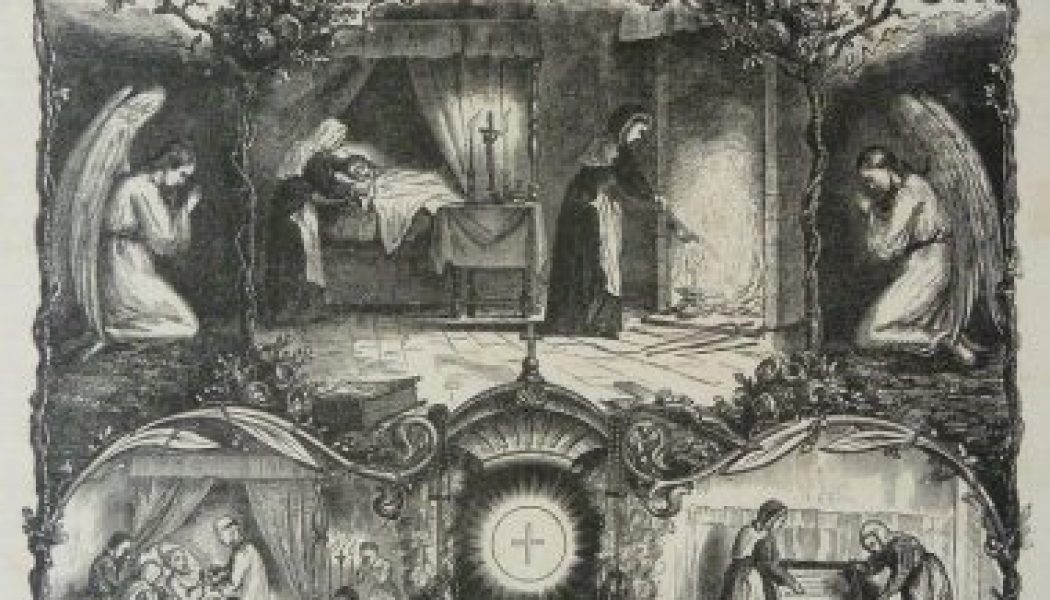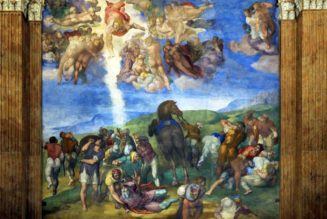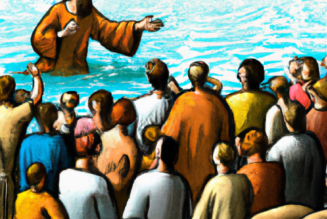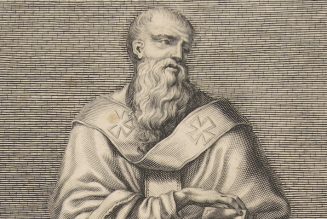The annual Corpus Christi procession along the Amsterdam canals was canceled due to coronavirus prevention measures.
“It is necessary, but very unfortunate,” said representatives of the Catholic and Syriac Orthodox Church in a press release. “Especially at a time when there is a need for prayer among the inhabitants of Amsterdam.”
A need for prayer? Do the inhabitants of the most permissive city in Europe really experience this? In the February edition of the magazine of the Diocese of Haarlem-Amsterdam, emeritus Bishop Jos Punt recalled this anecdote: “I once sat next to an American woman on a flight. She asked me: ‘Of which diocese are you a bishop?’ I replied ‘Amsterdam.’ She almost fell out of her chair. ‘Amsterdam, how can you be a bishop in Amsterdam?’ She meant, how can you be a bishop in Sodom and Gomorrah?”
“Indeed, Amsterdam has two sides,” he admitted. “What the world sees is mostly the negative side of prostitution, sex and drugs. The dark side.” But there are also “many good people living there, who are open towards others.”
“Amsterdam has the highest numbers of Mass attendance. Nowhere in the Netherlands are there so many diaconal initiatives for the poor and homeless. Nowhere in the country are there so many conversions. The number of people going to confession is the highest in the country. Of course, all of this also has to do with the international character of the city,” Punt said.
And there is that great event, still deeply rooted in the history of the capital: The Eucharistic Miracle of March 15, 1345, which turned Amsterdam into a place of pilgrimage.

An engraving depicting the ‘Miracle of Amsterdam’ (Credit: Johannes Walter/Public Domain.)
The miracle involved the story of a dying man who regurgitated the Host after being given Last Rites. According to the liturgical rules of the time, the Host was placed in the fire, but didn’t burn. It was retrieved intact from the ashes the next day.
When a Protestant city government was appointed in 1578, all of this came to an end: Catholics were no longer able to express their faith openly. Monasteries were demolished or repurposed, the devotion surrounding the Eucharistic Miracle was moved from the Heilige Stede (‘The Holy Site’, a chapel) to the Begijnhof.
The Protestant owner even demolished the chapel in 1908 to sell the land.
However, this did not prevent the flourishing of Amsterdam as a place of pilgrimage. In 1881, some Catholics decided to silently walk the route of the medieval procession for the Eucharistic Miracle; this evolved into the very popular Stille Omgang (‘Silent Procession’), in which several thousand Catholics participate every year.
In 2018, the Amsterdam Museum installed several panels on the outside of the building where the original chapel used to be; in this way even the most secular passers-by know where the Eucharistic Miracle took place.
The Corpus Christi procession was added to this Eucharistic tradition in 2004. Punt said he hoped for a new annual tradition alongside the Stille Omgang – and it came to pass.
Once the COVID-19 pandemic is over, something else will be added: The Perpetual Adoration of the Blessed Sacrament. Literally a Gebed zonder end – a prayer without end – as an alley in the city center is called.
This is planned not just for one place but is to take place in different churches and chapels throughout the city.

The chapel of the Holy Site in 1908 before it’s destruction. (Credit: Public Domain.)
Shirley Fonk and Gerda Hoogland are working hard to turn this project into a success.
“Nine years ago we started with Adoration in a chapel called De Liefde (‘The Love’) with a group of people. We prayed nonstop for 33 hours,” said Hoogland.
“When that chapel was demolished, we continued in the chapel of the Meeting Center of the Church of Our Lady. The rector of the church is grateful that we are here because he is already seeing the fruits of it, such as more baptisms and more people attending Sunday Mass. With the cooperation of several churches in the center, eastern and southern part of Amsterdam, we are close to realizing Perpetual Adoration in the city,” she said.
In a reversal of a trend being seen throughout the Netherlands, the possibility of going to Mass is growing in Amsterdam. The Moses and Aaron Church on the Waterlooplein was closed in 1969, but was entrusted to the Sant’Egidio community in 2015 and rededicated. Since then, Mass is celebrated in the church every Sunday. And since early 2019, a public Mass has been held in the private chapel of the eighteenth-century Occo Hofje on the Nieuwe Keizersgracht every third Sunday of the month. Charlotte de Cloet, who now lives there, took the initiative.

A group of participants in the ‘Stille Omgang’ walk by Amsterdam’s former town hall in 2018. (Credit: Milliped/Wikimedia Commons (CC BY-SA 4.0).)
“There is a special relationship with the Eucharistic Miracle of Amsterdam, which is depicted on the tabernacle,” she says. “The ancestor of Cornelia Occo, founder of the Occo Hofje, was Pompey Occo, the renowned sixteenth-century banker and patron. He was the administrator of the chapel of the Holy Site. The famous Occo Codex [a 16th century collection of medieval hymns] was commissioned by him, with polyphonic choral works in honor of the Blessed Sacrament. Our monthly Chapel Masses, in which music also plays an important role, are attended by an ever-growing number of visitors,” she said.
And the Holy Site itself? There is currently a haunted house in the building on its site. A group of Catholics would like to be able to pray there and are at the moment discussing this with the owner and the operator of the building. In the words of Punt: “We owe it to the Lord to try to get this special place back.”
This article was originally published in the Dutch Catholic weekly Katholiek Nieuwsblad on June 12th, 2020. It was translated for Crux by Susanne Kurstjens – van den Berk.










